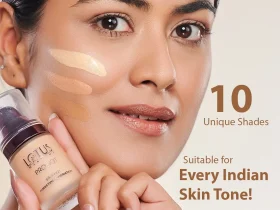Nipple correctors are a common solution for individuals who experience inverted or protruding nipples. These devices are designed to gently coax the nipples into a more natural position, helping individuals feel more confident and comfortable in their bodies.
However, many people are unsure about how long they can wear nipple correctors and if there are any potential risks or side effects.
What are nipple correctors and their purpose?
Nipple correctors are devices designed specifically to address inverted or protruding nipples. They typically come in the form of silicone cups or shields that fit over the nipples.
The purpose of these correctors is to gently apply pressure and stimulation to the nipples, gradually coaxing them into a more natural position over time.
It’s important to note that nipple correctors should not be mistaken for permanent solutions. They are a temporary means to address nipple appearance and do not provide a permanent fix.
With consistent and appropriate usage, nipple correctors can yield noticeable results and help improve nipple position.
Nipple correctors for maximum effectiveness?
When it comes to wearing nipple correctors for maximum effectiveness, it is crucial to find a balance between consistency and comfort.
It is essential to listen to your body and adjust the duration of wear accordingly. Some individuals may find that wearing nipple correctors for shorter periods of time, such as 30 minutes to an hour per day, still yields noticeable results.
To determine the optimal duration for you, it is advisable to consult with a healthcare professional or follow the guidelines provided by the manufacturer. Check for any signs of skin irritation or soreness and give your nipples ample time to rest and breathe in between wearing sessions.
Factors
When it comes to wearing nipple correctors for maximum effectiveness, it is important to consider a few factors to ensure both comfort and safety.
Firstly, it is crucial to choose the right size and fit for your nipple correctors. Ill-fitting correctors can cause discomfort and may not provide the desired results. Take accurate measurements of your nipples and choose a size that matches your measurements.
Another factor to consider is the material of the nipple correctors. Opt for hypoallergenic materials that are gentle on the skin, especially if you have sensitive skin or allergies.
Lastly, be mindful of your body’s response to wearing nipple correctors. If you experience any pain, discomfort, or skin irritation, discontinue use and consult with a healthcare professional.
Proper usage and maintenance
Now that you have chosen the right nipple correctors and considered various factors for maximum effectiveness.
To begin with, it is essential to follow the guidelines provided by the manufacturer. Different nipple correctors may have specific instructions for usage, such as the duration of wear and the frequency of usage.
When wearing nipple correctors, it is important to be consistent. Consistency is key in the process of reshaping and correcting the nipples. Develop a routine that works for you and stick to it.
After each use, clean the correctors thoroughly using mild soap and warm water. Gently pat them dry and store them in a clean, dry place. Avoid using harsh chemicals or abrasive materials that could damage the correctors.
Consult a professional
If you have any concerns or questions regarding the usage of nipple correctors, it is always a good idea to consult with a healthcare professional or a specialist in the field.
One instance where professional consultation may be beneficial is if you experience persistent discomfort or pain while wearing nipple correctors.
Furthermore, if you have any existing medical conditions such as skin allergies, dermatological conditions, or breast-related concerns, it is crucial to seek professional advice before using nipple correctors.
Lastly, if you have not achieved the desired results after following the recommended usage guidelines and maintenance routines, seeking professional input can be beneficial. A specialist in the field can assess your progress and provide additional strategies or alternatives to help you achieve your desired outcomes.
Conclusion
Nipple correctors can be an effective solution for individuals looking to reshape and correct their nipples. However, it is essential to be mindful of when to consult a professional for guidance and support.
If you experience severe pain or prolonged discomfort while using nipple correctors, it is crucial to seek professional attention.
They can provide valuable insights, alternative strategies, or adjustments to help you achieve your desired outcomes.







Hello!! My name is Annabella
I love to eat, travel, and eat some more! I am married to the man of my dreams and have a beautiful little girl whose smiles can brighten anyone’s day!